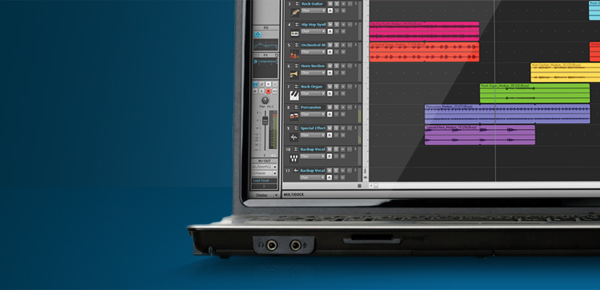Recording and making music on your computer can seem overwhelming when you are just getting started. You have the musical ideas in your head but you need to get them down and into a finished song format. This post will walk you through device setup, recording audio, playing virtual instruments, working with loops, and more. But first let’s go through some questions and make sure you have all the ingredients to begin recording.

What do I need to create high quality recordings on my Windows computer?
The simple answer is that you will need three basic things to begin building a Windows based computer recording system.
- A relatively new and well performing computer.
- An audio interface or a high performance computer sound card.
- The version of Cakewalk music recording software that fits your needs.
*****
Is my Windows computer good enough for recording music and audio?
Cakewalk recommends the following minimum system specs for Music Creator 6, our beginner level recording software. This will give you an idea if your current computer can stand up to the basic requirements for computer recording.
- Windows XP (32-bit), Windows Vista (32 or 64-bit), or Windows 7 (32 or 64-bit)
- Intel Core 2 Duo E8200 2.66 GHz or AMD Phenom Quad Core 9750 2.4 GHz processor
- 2 GB RAM
- 1280 x 800 minimum screen resolution
- 10 GB of hard drive space
If your PC does not meet these requirements or you are running an older version of Windows, you may want to seriously consider upgrading your computer. We also recommend you do not record on a computer that is heavily loaded with other files and programs. Read more Best Practices for Computers in the Studio.
*****
Do I need an Audio Interface?
Almost certainly yes, we strongly recommend it! If you plan to record guitars, vocals, or any other live instruments, a USB Audio Interface will allow you to easily connect your microphone or other cables to your computer. Audio Interfaces, like the ones made from Roland, also offer excellent pre-amps for pristine recording quality and low-latency drivers which will help remove most of the signal delay (aka. latency) you might otherwise experience. If you plan to play virtual piano, virtual drums, or any other virtual instruments, you may also want to purchase a USB MIDI Keyboard Controller for easy hook-up and playability.
*****
What type of music do I want to record?
Cakewalk offers high performance music recording software perfect for any level of musician, budget, or style of music.
Are you a singer songwriter and want to create arrangements or backing tracks? Perhaps you are a multi-talented solo artist and play multiple instruments. Or maybe you just want to get some beats down and freestyle over the top. If one of these sounds like you, it is likely that beginner recording software like Music Creator 6 can do everything you need and much more. Watch this video overview to get a better idea of the features included. If you need more professional features like advanced editing tools, audio effects, and virtual instruments, the check out our guide and choose Which DAW is right for you.
Learn more about Music Creator 6 or Buy Music Creator 6 today.
*****
Get started quickly with Music Creator 6
OK, now you are ready to get to the fun stuff. You have your powerful new recording software installed and are ready to explore the possibilities. This video will show you how to create and save new projects and explain the other tools important for new users.
*****
Hardware device setup in Music Creator 6
Learn how to set up your audio and MIDI devices in Music Creator 6 including internal soundcards, external USB audio interfaces, USB microphones, USB MIDI Keyboards, and playback devices (speakers or headphones).
*****
Working with loops in Music Creator 6
Learn how to use the Browser to search for, preview, and add loops to a project. Create songs and backing tracks using the song construction kits included in Music Creator 6.
*****
Play virtual instruments in Music Creator 6
Learn how to play and record virtual instruments using the Cakewalk Sound Center as an example. Provides specific instructions on how to insert, select presets, preview, play (with and without a MIDI keyboard) and record.
*****
Recording audio in Music Creator 6
Learn how to add (guitar and vocal) audio tracks and record audio into a project. Includes how to select the input, arm a track, check the level and record. Also provides valuable information about dealing with latency.
*****
Sharing music with Music Creator 6
Learn how to export and share a song from Music Creator. Includes instructions on how export songs as MP3s or WAV files, burn CDs, or use the new SoundCloud feature to post to Facebook, Twitter, etc.
*****
And that covers the basics! You now know how to record music on a Windows computer using Music Creator 6. As you continue to use Music Creator 6 you may want to learn more about the other tools, instruments and effects included. Music Creator 6 Explained picks up right where these videos leave off with 4 hours of additional tutorials and recording techniques.


2 Replies to “How to Record Music on a Windows Computer – A Free Video Guide”
Comments are closed.